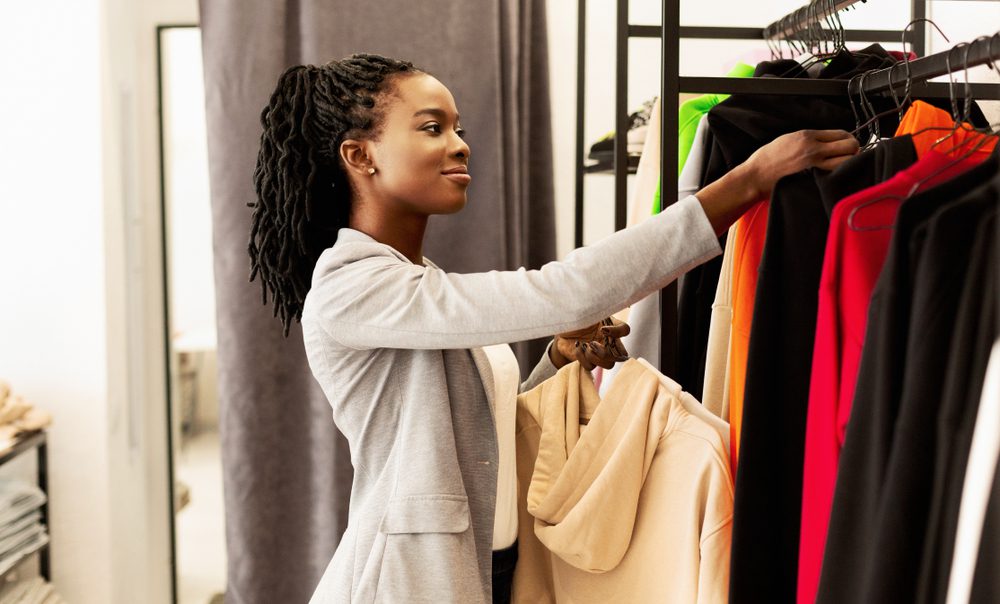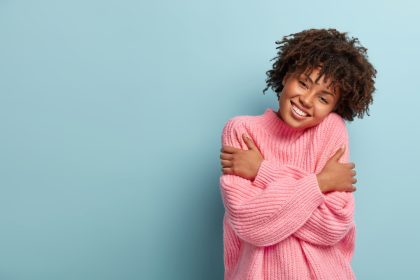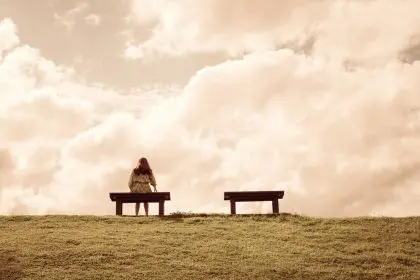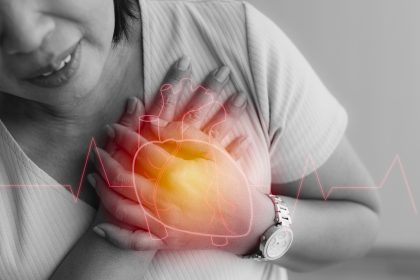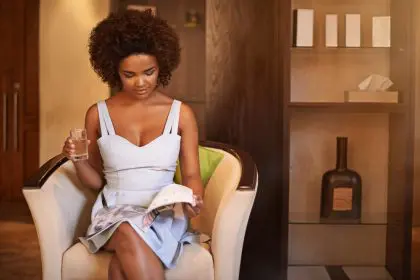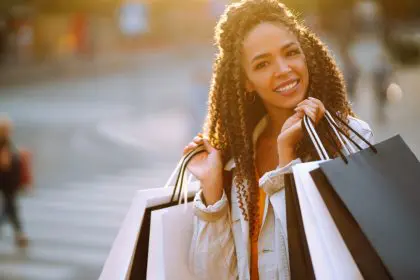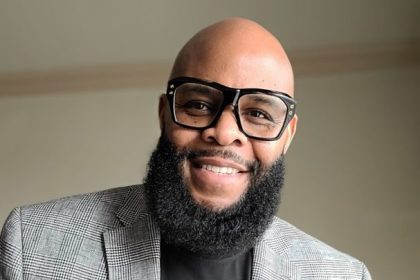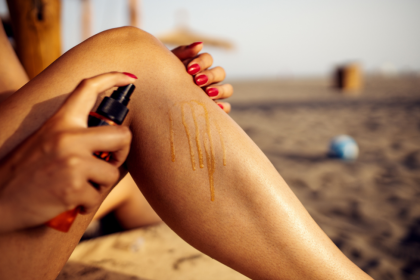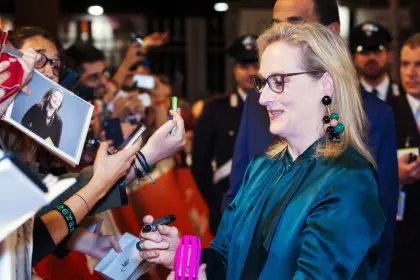Feeling sluggish on Monday morning? Before reaching for that fourth cup of coffee, try something simpler — your closet might hold the energy boost you’re looking for. The colors you wrap around your body aren’t just about looking good. They’re actively changing your biochemistry in ways science is just beginning to understand.
While most of us choose clothes based on what matches or slims our figure, we’re missing the profound psychological impact our color choices have on our mood, energy levels, and even how others respond to us. This invisible influence affects everything from your productivity at work to your emotional resilience during stressful situations.
Let’s explore the fascinating science behind how the colors you wear can transform your mental state, improve your energy levels, and even enhance your performance — without a single pill, supplement, or mindfulness practice. The mood-boosting power hanging in your closet might be the simplest wellness hack you’ve never seriously tried.
The brain chemistry reaction you can see
Your brain processes color before you’re even consciously aware of it, triggering neurological and hormonal responses that directly impact your emotional state and energy levels. This happens through several fascinating mechanisms that work without your awareness.
Visual processing pathways prioritize color information, analyzing it faster than form or texture. This evolutionary advantage helped our ancestors quickly distinguish ripe fruits or potential dangers. When you wear bright colors, these same pathways activate, creating immediate physiological changes before conscious thought even begins.
Serotonin production increases when you’re exposed to certain colors, particularly bright, warm hues. This “feel-good” neurotransmitter directly elevates mood and stabilizes emotional responses. Studies measuring brain activity show serotonin levels rise within minutes of exposure to colors like yellow and orange — whether seeing them in your environment or wearing them against your skin.
Melatonin suppression occurs with exposure to bright colors, particularly those with blue undertones. This hormone regulation helps maintain alertness and energy throughout the day by signaling your brain to delay sleep preparation. Wearing vibrant blue-based colors in the morning can help reset your circadian rhythms more effectively than reaching for caffeine.
Dopamine release patterns change in response to novel or pleasurable visual stimuli, including unexpected or personally appealing colors. This reward neurotransmitter creates feelings of motivation and pleasure. Wearing colors you find particularly attractive actually triggers this dopamine response, creating a subtle but persistent mood elevation throughout the day.
Cortisol levels — your primary stress hormone — show measurable decreases when surrounded by certain colors, particularly green and blue tones. Wearing these colors can create a portable stress-reduction effect, essentially carrying a calming influence with you throughout your day.
The power colors proven to energize instantly
Certain colors have consistently demonstrated energizing effects across multiple studies, with responses so reliable they’re now used in therapeutic settings. Understanding these specific effects lets you strategically choose colors for days when your energy reserves feel depleted.
Red creates immediate physiological arousal, increasing heart rate, respiration, and even grip strength in multiple studies. This activation effect explains why athletes wearing red uniforms statistically outperform identical athletes in different colors. Wearing even small amounts of red — a tie, scarf, or shoes — triggers this energizing response without overwhelming your outfit.
Orange combines the energizing aspects of red with the mood-elevating qualities of yellow, creating a balanced energetic boost without the potential aggressiveness of pure red. This color particularly enhances creative energy and enthusiasm, making it ideal for brainstorming sessions or creative projects requiring sustained innovative thinking.
Bright yellow specifically targets mental energy, enhancing cognitive alertness and optimism simultaneously. Studies show improved memory recall and faster decision-making when yellow is prominently in your visual field. Even yellow accessories can create this cognitive boost effect during mentally demanding tasks or mornings when brain fog persists.
Electric blue specifically enhances productivity energy, helping maintain focus during repetitive or detail-oriented tasks. The wavelength of true blue has been shown to optimize brain activity for sustained attention without the mental fatigue that naturally occurs during extended concentration periods.
Magenta creates what researchers call “arousal without aggression” — an energized state combined with positive emotional tone. This often-overlooked color stimulates both physical and mental energy while simultaneously enhancing creative thinking, making it particularly valuable during afternoon energy slumps when both body and mind need revitalization.
The calming colors that don’t make you sleepy
When stress runs high but you still need to function effectively, certain colors provide calming effects without the sedation that might reduce your productivity. These colors work through specific neural pathways to reduce anxiety while maintaining alertness.
Sage green reduces sympathetic nervous system activity — your fight-or-flight response — without triggering the parasympathetic dominance that causes drowsiness. This stress-reducing effect occurs quickly, with measurable decreases in blood pressure and muscle tension within 5-10 minutes of exposure, making green clothing an effective tool for high-pressure days.
Lavender specifically affects the anterior cingulate cortex, a brain region involved in emotional regulation and conflict resolution. Unlike deeper purples that can be stimulating, true lavender creates mild relaxation while maintaining cognitive clarity. This combination makes it particularly effective for situations requiring both calm and mental sharpness.
Soft blues activate alpha brain waves associated with relaxed alertness similar to a meditative state. This neural pattern allows you to remain productive while reducing psychological pressure and racing thoughts. Sky blue tones are particularly effective for this balanced calming effect without drowsiness.
Blush pink has demonstrated the most rapid cortisol-reducing properties of any color in controlled studies. This stress hormone reduction creates almost immediate subjective experiences of comfort and safety without cognitive dulling. Even small accents of this color, like a blush pink shirt under a suit, can create this stress-buffering effect during tense situations.
Certain teals combine the emotional regulation properties of blue with the restorative aspects of green. This combination creates what color psychologists call “active restoration” — reducing psychological pressure while maintaining energy reserves. This makes teal particularly valuable during periods of recovery from burnout or high-stress projects.
The surprising mood shifts different colors trigger
Beyond general energy levels, specific colors reliably induce particular emotional states through both psychological associations and neurological responses. Understanding these emotional effects lets you strategically choose colors to counteract or enhance specific moods.
Yellow consistently ranks highest for inducing optimism across cultures. This response appears partly innate rather than purely learned, as the effect persists even without positive cultural associations. Wearing yellow triggers what psychologists call “positive expectancy bias” — unconsciously noticing and remembering positive aspects of experiences while more easily dismissing negative elements.
Royal purple activates brain regions associated with creativity and imagination while simultaneously enhancing feelings of confidence and self-assurance. This unique combination creates what researchers call “secured creativity” — innovative thinking without the self-doubt that often accompanies new ideas. This makes purple particularly valuable when presenting creative work or advocating for innovative approaches.
Forest green specifically enhances feelings of groundedness and connection through both evolutionary associations and specific wavelength processing in the visual cortex. This emotional anchoring effect makes deep greens particularly valuable during periods of uncertainty or rapid change when you need psychological stability without emotional dulling.
Coral uniquely combines physical energy with social openness, making it particularly effective for combating social anxiety while maintaining engagement. Brain scans show increased activity in both energizing and socially-oriented neural networks when viewing this color, making it especially valuable for networking events or socially demanding situations.
Turquoise consistently scores highest for inducing feelings of refreshment and renewal across diverse populations. This rejuvenating effect works particularly well against mental fatigue — the feeling of being “burned out” rather than physically tired. Wearing turquoise creates subjective experiences of mental clarity and emotional resilience even during demanding cognitive tasks.
The skin tone secret that multiplies color impact
The interaction between your personal coloring and clothing colors dramatically affects how colors influence your mood and how others perceive you. Understanding your unique color profile maximizes these psychological benefits while ensuring you look your best.
Undertone matching significantly amplifies color energy transfer. When clothing colors harmonize with your natural undertones, your brain processes them as extensions of yourself rather than separate elements. This integration enhances the psychological impact of colors by approximately 40 percent compared to undertone-clashing choices, according to perception studies.
Personal color analysis identifies four main seasonal color types — Spring, Summer, Autumn, and Winter — based on the interaction between your skin, hair, and eye colors. Each type responds most powerfully to specific color families that naturally harmonize with your coloring. Finding your precise season dramatically increases the mood-enhancing potential of your wardrobe.
Contrast levels between your features determine how much color intensity you can effectively wear. High-contrast individuals — those with significant difference between hair, skin, and eye colors — experience stronger psychological effects from similarly high-contrast outfits. Low-contrast individuals benefit more from tonal combinations that create harmony rather than stark differences.
Color brightness relative to your natural coloring affects how energy is transferred. Wearing colors slightly brighter than your natural palette creates energy without overwhelming your appearance. This “plus one” brightness rule maximizes mood benefits while ensuring colors enhance rather than overpower your natural features.
Seasonal color shifting requires adaptation, as most people’s coloring changes subtly throughout the year due to sun exposure or hair color changes. Colors that boost your mood in summer might need adjustment during winter months when skin typically becomes paler and contrast levels change. Being attentive to these shifts lets you maintain optimal color benefits year-round.
The workplace color strategy for performance
Strategic color choices can significantly impact professional performance through both psychological effects on you and perceptual influences on colleagues. Understanding these workplace dynamics helps you leverage color for career advancement.
Authority colors create perception advantages in leadership roles. Navy blue consistently rates highest for perceived competence and trustworthiness across industries. For leadership positions, incorporating this color, particularly during presentations or negotiations, activates both personal confidence and positive evaluation from others.
Creative credibility colors differ by industry. While traditional creative fields respond positively to expressive color choices, corporate creative roles require strategic balance. Adding unexpected color combinations while maintaining some industry-standard elements creates ideal perception as both innovative and credible.
Cognitive performance colors change based on task requirements. Red enhances performance on detail-oriented tasks requiring accuracy, while blue improves creative problem-solving. Matching your clothing colors to your primary responsibilities for the day can create measurable performance improvements.
Memory impression colors make you more memorable in networking situations. Research shows people wearing distinctive colors within professional norms — like a burgundy tie instead of red, or soft teal instead of navy — are recalled more accurately and described more positively in follow-up assessments. This “appropriate distinctiveness” creates recognition advantages without seeming unprofessional.
Industry color expectations create baseline requirements that vary dramatically between fields. While legal and financial sectors respond most positively to traditional dark colors with minimal accents, marketing and creative industries attach positive attributes to more expressive choices. Understanding your specific industry’s color expectations lets you strategically conform to or mindfully deviate from these norms for specific effects.
The color combinations that amplify emotional impact
The interaction between colors creates psychological effects beyond what individual colors produce alone. These combination dynamics can dramatically enhance or modify the mood-boosting potential of your clothing choices.
Complementary color pairs — those opposite on the color wheel — create maximum energy and visual impact. These combinations like blue-orange or purple-yellow produce what vision researchers call “simultaneous contrast,” where each color appears more vibrant when placed against its complement. This enhanced vibrancy creates stronger psychological activation than either color alone.
Analogous combinations — colors adjacent on the color wheel — produce harmony and emotional flow rather than energetic contrast. These pairings create what color psychologists call “emotional coherence,” where similar wavelengths produce consistent, reinforcing effects rather than stimulating contrasts. This approach works particularly well for creating sustained mood states rather than immediate energy boosts.
Split complementary arrangements offer balanced stimulation. Using one color with the two colors adjacent to its complement creates visual interest without the potential overwhelming effect of direct complementary pairs. This approach provides energy with sophistication, particularly valuable in professional settings where full complementary combinations might appear too casual.
Monochromatic schemes in mood-boosting colors create amplification through repetition. Wearing different shades of the same color family signals intentionality that enhances the psychological impact through what researchers call the “exposure reinforcement effect.” This approach works particularly well with colors that have specific emotional associations you want to strengthen.
Accent color psychology offers benefits without commitment. Strategic placement of small amounts of mood-boosting colors — like a bright pocket square, jewelry, or shoes — creates psychological effects without requiring comfort with wearing large blocks of vibrant color. Research shows even small color accents produce approximately 60-70 percent of the mood-boosting effects of full garments in that color.
The morning color ritual that transforms your day
Incorporating intentional color selection into your morning routine creates cumulative benefits that extend beyond immediate mood enhancement. This practice develops what psychologists call “emotional self-regulation through environmental cues.”
Mood-matching provides immediate support for your current emotional state. When feeling low-energy or down, selecting colors known to counteract these specific states creates a form of emotional first aid that begins working immediately upon getting dressed.
Intention-setting through color choice frames your psychological approach to the day. Selecting colors based on the emotional resources you’ll need—confidence for presentations, calm for stressful meetings, energy for long workdays—primes your brain to access these resources more readily throughout the day.
Weather-countering uses color psychology to balance environmental effects. On gray, dreary days, bright warm colors create psychological sunshine that counteracts the mood-dampening effects of weather. This countering effect helps maintain energy and optimism despite environmental factors that typically drain both.
Psychological preparation through color rituals creates powerful anchoring effects. Consistently wearing specific colors for particular activities or emotional needs trains your brain to associate these colors with successful emotional states. Eventually, merely seeing or wearing these colors triggers the associated emotional resources through classical conditioning.
Wardrobe rotation systems ensure you regularly access the full range of color benefits. Organization methods like color-coding or seasonal rotation prevent falling into monochromatic habits that limit psychological variety. Simple systems like grouping clothes by color effect rather than color family makes intentional selection effortless even during busy mornings.
The colors surrounding your body aren’t just aesthetic choices — they’re powerful psychological tools affecting everything from your hormone levels to your cognitive performance. By making conscious color choices, you tap into a simple but remarkably effective method for managing your mood, energy, and even how others perceive and respond to you.
The most powerful aspect of color psychology isn’t just understanding how colors affect you, but strategically applying this knowledge to support your specific needs each day. This mindful approach transforms your wardrobe from a collection of clothes into a carefully curated toolkit for psychological wellbeing.
Your mood-boosting advantage might be hanging right in your closet, waiting to transform both how you feel and how you perform. All that’s required is the knowledge to use it intentionally and the willingness to step slightly outside your color comfort zone to discover the remarkable effects that different hues can create in your daily experience.

